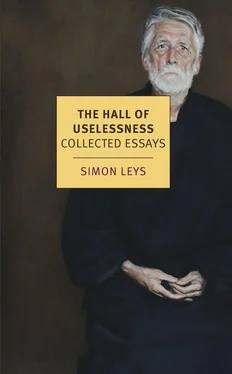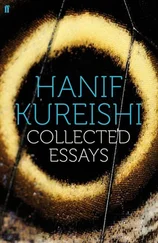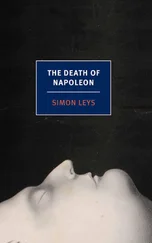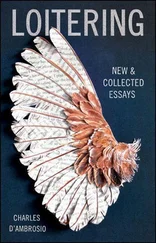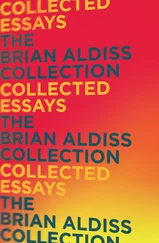Probably the best way to examine this theme of “communion with the universe” in Chinese art is still to study the central role played by the concept of qi in the aesthetic theories.
Qi is sometimes translated as “spirit,” which could be misleading, unless one remains aware that the Chinese have a materialistic notion of spirit and a spiritualistic notion of matter. Far from being antithetical, the two elements indissolubly permeate each other. A good example of this conception can be found, for instance, in the well-known “Hymn of the Righteous Qi ,” written in the thirteenth century by Wen Tianxiang (this piece appears in every anthology, and when Chinese schools were still dispensing a literary education, all schoolchildren could recite it by heart). After having conquered China, the Mongol invaders wished to secure the co-operation of Wen, who had been a prestigious minister under the last Song emperor. Wen rejected their offers and was thrown into jail. There, waiting to be executed, he composed his famous “Hymn.” In the introduction he wrote for his poem, he described the conditions in his prison: for many weeks, he says, he was surrounded by all kinds of pestilential qi —dampness, cold, filth, hunger, disease — and yet he observed that, alone among the other captives, he continuously enjoyed excellent health. His explanation was very simple: he was inhabited by a qi of righteousness — his unwavering loyalty towards the defeated dynasty — which naturally enabled him to repel the influences of all the nefarious qi . Whereas a Western mind would wish to distinguish between different realms, for the Chinese classical mentality, one single concept of qi can simultaneously cover physiological realities and abstract principles, material elements and spiritual forces. In Wen Tianxiang’s world, it is quite normal that the fire of patriotism should melt ice, and that morality should overcome illness. (Would it be irrelevant to note in this connection that modern developments of psychosomatic medicine seem to confirm to some extent these traditional conceptions? Chinese yoga — which is called “discipline of the qi ” and which is essentially based on meditation and breathing techniques — is now being used with some measure of success to cure various illnesses, and more particularly to treat certain forms of cancer.)
The literal meaning of qi is “breath” or “energy” (etymologically, the written character designates the steam produced by rice being cooked). In a broader and deeper sense, it describes the vital impulse, the inner dynamism of cosmic creation. For an artist, the most important task is to collect this energy within the macrocosmos that surrounds him, and to inject it into the microcosmos of his own work. To the extent that he succeeds in animating his painting with this universal breath, his very endeavour echoes the endeavours of the cosmic Creator.
Painting is thus, in a literal sense, an activity of creation and not of imitation ; this is precisely the reason why it possesses a unique prestige, a sacred character. This notion is important and deserves to be carefully examined. In the West, both classical antiquity and Renaissance culture considered that art possessed an essentially illusionist nature. Thus, for instance, according the well-known Greek anecdote, the competition between Parrhasios and Zeuxis ended in a double deceit: the birds that wanted to peck the grapes, and the spectators who wished to lift up the veil, eventually met with a mere painted board. Many legendary anecdotes about Renaissance artists reflect a similar mentality. Thus, Michelangelo is described as angrily hitting his Moses , because the statue would not talk or move: the lifeless marble infuriated him all the more for being so intensely lifelike. But in China the earliest anecdotes about famous artists all suggest a diametrically opposite conception; while Western artists applied their ingenuity to deceive the perceptions of the spectator, presenting him with skilful fictions, for a Chinese painter, the measure of success was not determined by his ability to fake reality but by his capacity to summon reality. The supreme quality of a painting did not depend on its illusionist power but on its efficient power; ultimately, painting achieved an actual grasp over reality, exerting a kind of “operative” power. A horse from the imperial stables began to limp after Han Gan had painted its portrait; it was subsequently found that the artist had forgotten to paint one of its hooves. Or again, the emperor who had commissioned Wu Daozi to paint a waterfall on a wall of the palace, a little later asked the painter to erase his painting; at night the noise of the water prevented him from sleeping.
In an archaic stage, painting was thus invested with magic powers. When magic matures, it becomes religion; in a sense, one might say that painting — more specifically landscape painting —constitutes the visible manifestation and the highest incarnation of China’s true religion, which is a quest for cosmic harmony, an attempt to achieve communion with the world. Eventually the function of painting was redefined in aesthetic terms; still, in order to appreciate fully all the implications of the aesthetic concepts, one must keep in mind the archaic notions (well illustrated by the magic anecdotes) from which they are derived. The relation between the painted landscape and the natural landscape is not based on imitation or representation; painting is not a symbol of the world, but proof of its actual presence . As a painter and theoretician of the eleventh century neatly summarised it, the purpose of painting is not to describe the appearances of reality, but to manifest its truth. The painted landscape should be invested with all the efficient powers of mountains and rivers; and if this can be achieved, it is because the creator of the painting operates in union with the universal Creator; his performance follows the same principles and develops along the same rhythms. Artistic creation and cosmic creation are parallel; they differ only in scale, not in nature.
Here again, it is striking to see how Western artists often arrived at similar conclusions by purely intuitive and empirical means. Flaubert, for instance: “What seems to me the highest (and the most difficult) thing in Art, is not the ability to provoke laughter, or tears, or to make people horny or angry, but to act like Nature does .”[11] Or again, Claudel: “Art imitates Nature not in its effects as such, but in its causes, in its ‘manner,’ in its process, which are nothing but a participation in and a derivation of actual objects, of the Art of God himself: ars imitatur Naturam in sua operatione .”[12] Picasso put it more concisely but no less explicitly: “The question is not to imitate nature, but to work like it.”[13]
It is in the theories of qi and of its action that we can find the best descriptions of the relation between artistic creation and cosmic creation. These theories occupy a central position in Chinese aesthetics. At first the concept of qi might easily appear rather esoteric and abstruse to Western readers; in fact, it must be emphasised that it is also a concrete, practical and technical notion that can be effectively demonstrated and experienced. Thus, for instance, successful transmission and expression of qi can be directly conditioned by technical factors, such as correct handling of the brush, movements of the wrist, angle of contact between the tip of the brush and the paper, and so forth. Qi in itself is invisible, but its effects and action are as evident and measurable as, for instance, the effects and action of electrical energy. Like electricity, it is without body or form, and yet its reality is physical: it can be stored or discharged; it pervades, informs and animates all phenomena. Although to fully grasp this concept would require us to refer to Chinese philosophy and cosmology, its aesthetic applications present universal relevance. Once more, the Chinese have analysed more systematically and more deeply a phenomenon of which Western painters did not remain unaware: a painting must be invested with an inner cohesion that underlies forms and innervates the intervals between forms. In a mediocre painting, forms are separated by dead intervals and blanks are negative spaces. But when a painting is charged with qi , there are exchanges of current that pass between the forms; their interaction makes the void vibrate. A painter should aim to turn his painting into a sort of energy field where forms constitute as many poles between which tensions are created; these tensions — invisible, yet active — ensure the unity and vital dynamism of the composition. All these basic notions have been experimented with and explored by Paul Klee, for instance. What is perhaps one of the best descriptions of the role of qi was provided by André Masson without any reference to Chinese painting: “A great painting is a painting where intervals are charged with as much energy as the figures which circumscribe them.”[14]
Читать дальше
